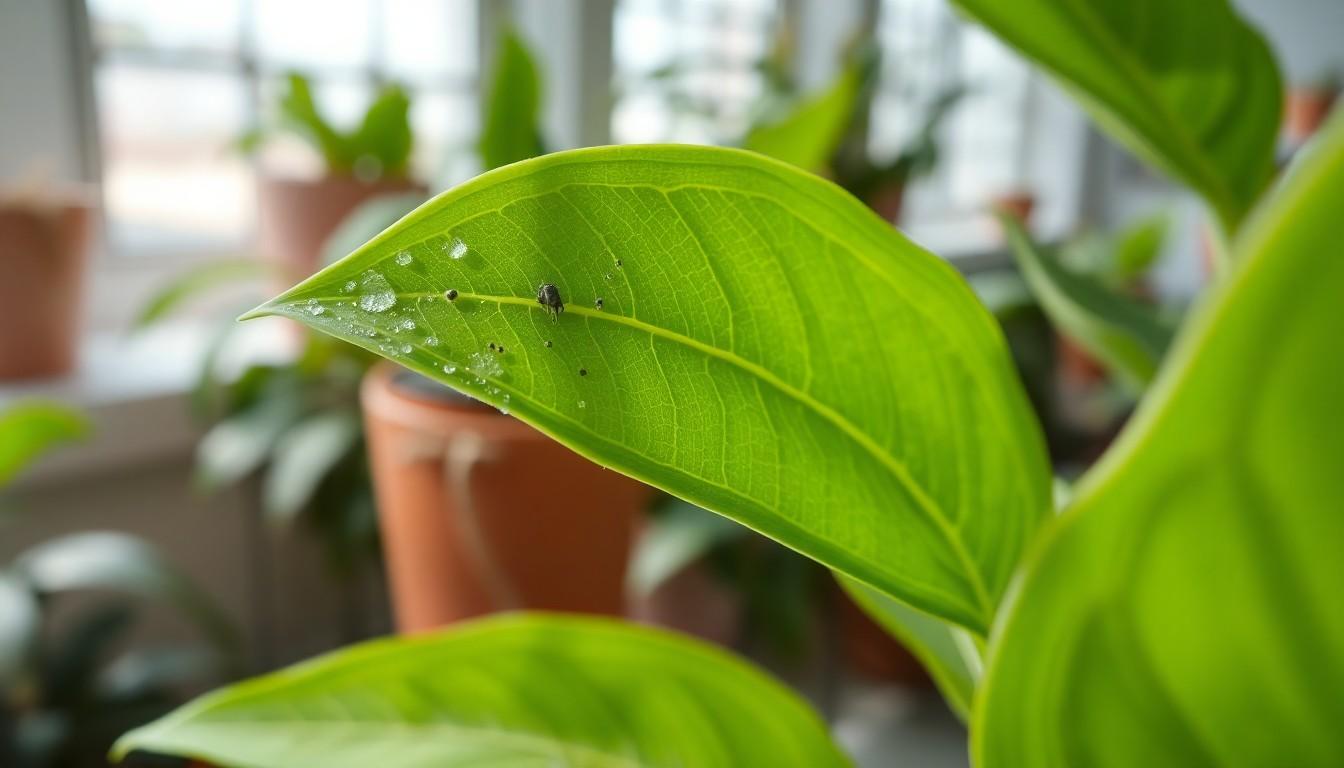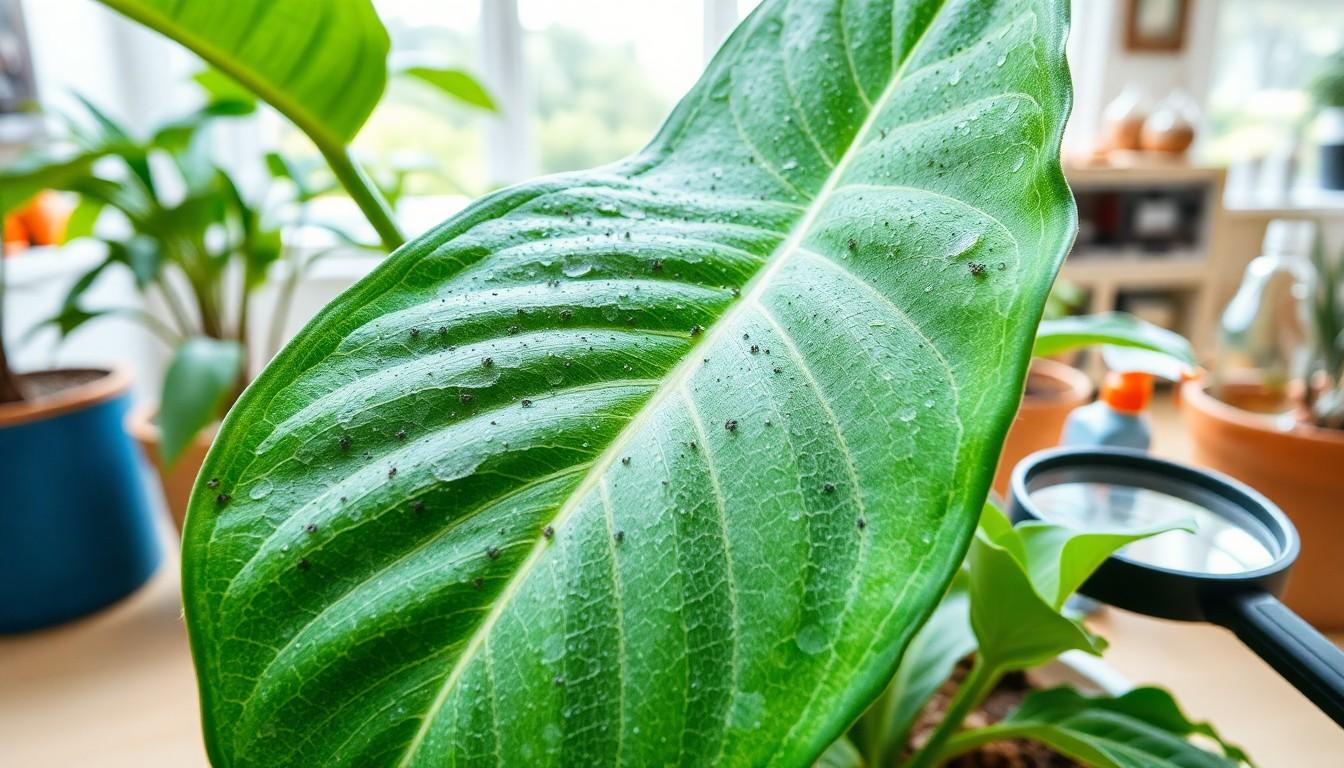Thrips might sound like a character from a sci-fi flick, but they’re very real and very sneaky when it comes to houseplants. These tiny pests can turn your beloved greenery into a battleground, leaving you wondering if your plants are auditioning for a horror movie. If you’ve ever spotted tiny black specks or silvery streaks on your leaves, it’s time to take action before your plants start plotting their escape!
Thrips Houseplants
Thrips are tiny insects that pose a significant threat to houseplants. Their presence requires immediate attention to prevent lasting damage.
What Are Thrips?
Thrips belong to the order Thysanoptera and measure between 0.5 to 15 millimeters in length. These elongated, slender insects vary in color from yellow to black, with some species featuring wings. Thrips feed on plant sap, which leads to stunted growth and leaf discoloration. Some species are known for their ability to transmit plant viruses, further exacerbating their impact on plant health.
Common Types of Thrips Affecting Houseplants
Several thrips species commonly affect houseplants, including Western flower thrips, onion thrips, and chrysanthemum thrips. Western flower thrips are prevalent in many regions and often inflict damage on flowers. Onion thrips typically target onion and garlic plants but can infest various houseplants. Chrysanthemum thrips mainly impact chrysanthemums but may spread to other plants, creating a broad range of concerns for plant owners. Identifying these types promptly can significantly aid in managing infestations effectively.
Identifying Thrips Infestation
Detecting thrips infestation early is crucial for effective management. Several signs indicate their presence and the resulting damage.
Signs of Thrips Damage
Small black specks often appear on leaves, indicating fecal matter from thrips. Leaves may develop silver streaks or shiny patches, showcasing feeding damage. Stunted growth signals that the plant struggles due to sap loss. Yellowing or browning of foliage further demonstrates plant stress. In severe cases, distorted growth or curled leaves may emerge. Monitoring these signs allows homeowners to address thrips concerns promptly.
Examining Your Houseplants for Thrips
Inspecting houseplants thoroughly reveals thrips more effectively. Start by examining the undersides of leaves, where pests typically hide. A magnifying glass aids in spotting these tiny insects, often less than 2 millimeters long. Look for any irregularities in leaf texture as well as discoloration. Tap leaves over a white paper sheet; fallen thrips will contrast against the paper’s surface. Checking nearby soil also helps identify any fallen larvae or eggs. Regular and detailed inspections help maintain plant health.
Treatment Options for Thrips
Effective treatment for thrips involves utilizing various methods. Homeowners can choose organic or chemical solutions to combat these pests.
Organic Methods to Control Thrips
Beneficial insects like ladybugs can help reduce thrips populations. Neem oil serves as a natural pesticide by disrupting their life cycle. Insecticidal soap effectively targets and eliminates thrips upon contact. Regularly spraying water on plants can also dislodge these pests. Diatomaceous earth acts as a physical barrier, harming thrips that come into contact with it. Each of these options promotes plant health while minimizing environmental impact.
Chemical Solutions for Thrips Infestation
Pyrethroid-based insecticides provide quick relief by attacking thrips directly. Systemic insecticides work from within the plant, offering prolonged protection against infestations. Always follow label instructions for application rates and safety precautions. Reapplication may be necessary to ensure effectiveness, particularly during peak thrip activity. Chemical options should be considered with caution, especially in households with children or pets.
Preventing Thrips in Houseplants
Preventing thrips infestations is crucial to maintaining healthy houseplants. Effective measures exist that protect plants from these pests.
Best Practices for Thrips Prevention
Implementing good practices helps deter thrips. Keeping plants clean eliminates potential hiding spots. Regularly wiping leaves with a damp cloth removes dust and debris, which attracts pests. Using sticky traps around plants captures any drifting thrips. Quarantining new plants for a few weeks prevents the introduction of pests into existing collections. Rotating plants provides better air circulation, reducing the chance of infestations. Monitoring surrounding areas can also prevent pest transfer from outdoor plants.
Maintaining Healthy Houseplants
Healthy plants are less susceptible to thrips. Ensuring proper watering practices strengthens plants against stress. Overwatering and underwatering both weaken plant defenses. Providing adequate sunlight boosts plant vigor. Fertilizing plants appropriately supports growth, enhancing resilience. Choosing resistant plant varieties can further reduce the risk of infestation. Pruning dead or damaged foliage prevents thrips from establishing. By maintaining overall plant health, owners significantly decrease the likelihood of thrips and other pests.
Thrips can pose a serious threat to houseplants but awareness and proactive measures can make a significant difference. By regularly inspecting plants and recognizing early signs of infestation, owners can take swift action to protect their greenery. Utilizing both organic and chemical treatments effectively addresses existing problems while preventive strategies help maintain plant health.
With careful attention to cleanliness and overall plant care, it’s possible to create an environment less conducive to thrips. By following these guidelines, plant enthusiasts can enjoy thriving houseplants free from the damage caused by these persistent pests.





